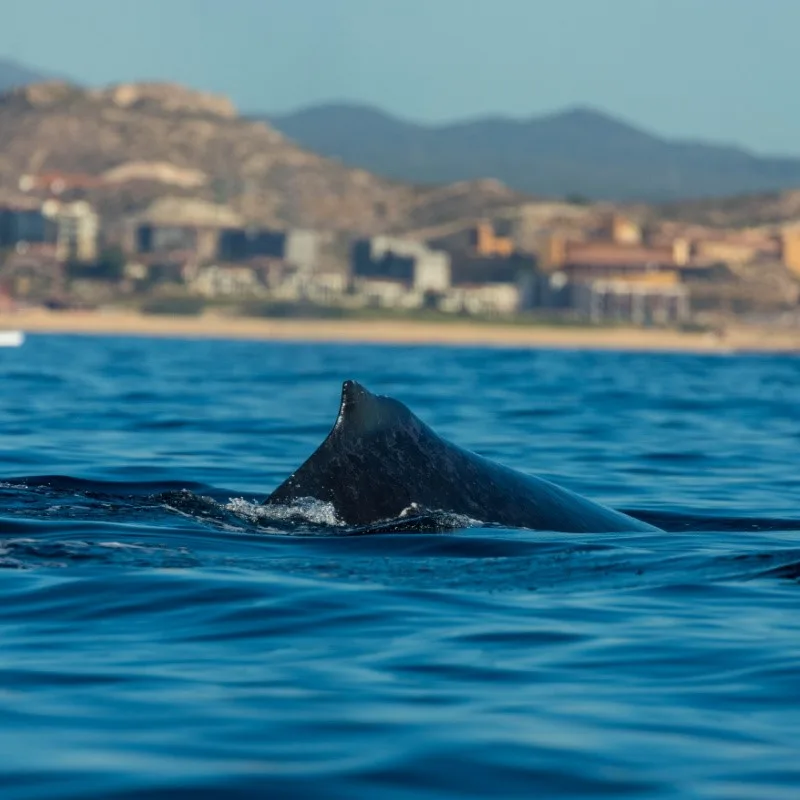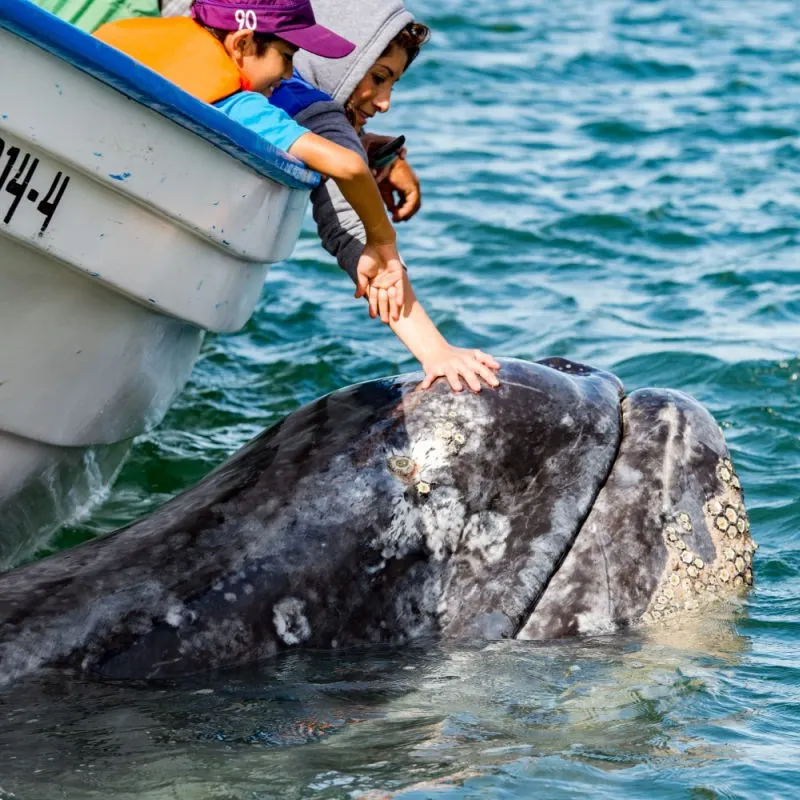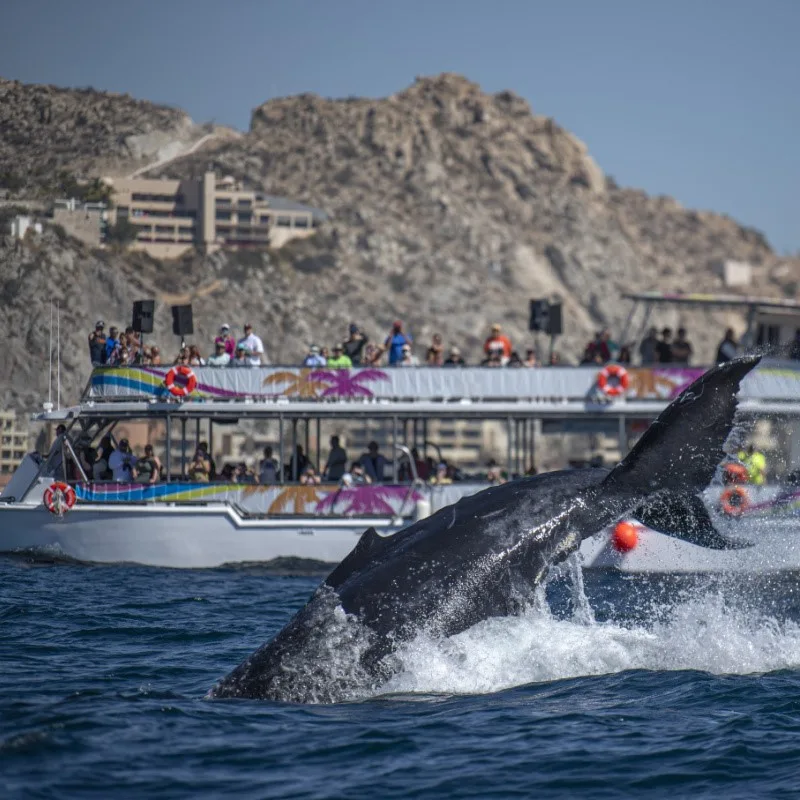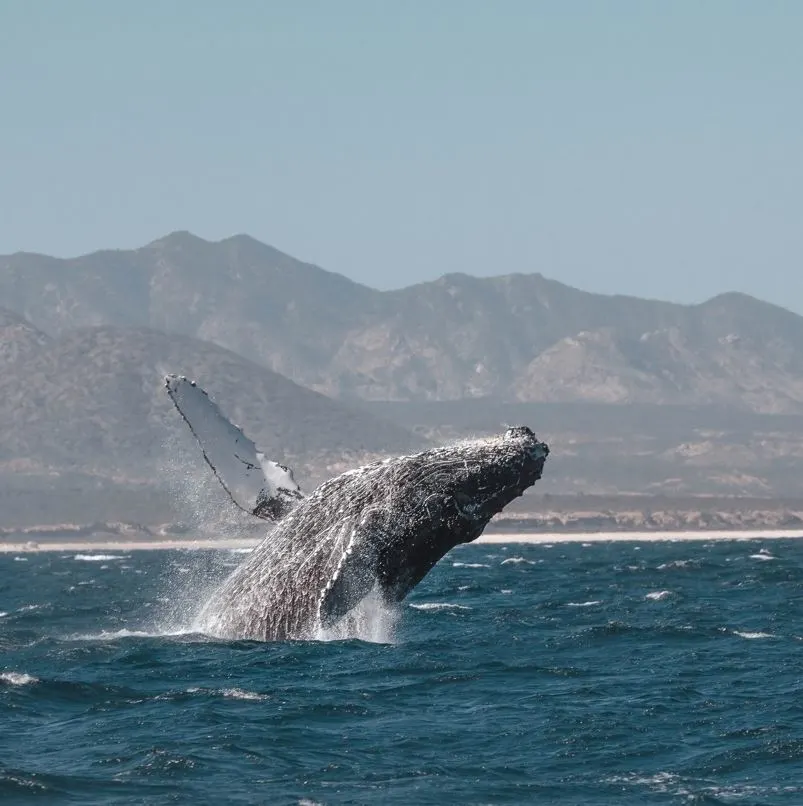Last Updated
To the delight of many tourists on the shore at the Cabo del Sol hotel in Los Cabos, the first whales of the season were spotted playing in the late fall waves.
The Start of Whale Watching Season
It’s a little earlier than usual for the first whales of the season to appear in the beach resort destination. Typically, the season officially starts in early December, peaking in late-December to late-January, and ending in April.

That has recently been determined as the official start to the season according to the Official Gazette of the Mexican Federal Government.
However, for the peak travel season visitors, the sighting of the playful animals cresting the waters off the coast of Los Cabos was quite an amazing experience.
Two boats also headed out to help tourists get closer to the first whales to visit Los Cabos this season.
What Types of Whales are There?
There are two main types of whales that can be spotted off the coast of Los Cabos and surrounding areas during the traditional whale watching season.
The largest animals ever to live on the earth, Blue Whales, are a common sight off the coast of Los Cabos during the annual whale migration season. They can grow to be as long as 110 feet in length and amazingly can weigh as much as 330,000 pounds. They are endangered and typically live 80 to 90 years.

Another popular whale seen off the coast of Los Cabos during whale watching season is the Gray Whale, also known as the California Gray Whale. They are much smaller in size than blue whales, at about 40 to 50 feet in length. They are also an endangered species and can weigh up to 90,000 pounds. Their lifespan is unknown.
Orcas are also a common sight during the whale watching season in Los Cabos, although their numbers can be smaller than the blue and gray whales.
Where To Enjoy Whale Watching

For Los Cabos travelers, there are two main places to see the gentle giants of the sea depending on the migration pattern of the large whales.
From mid-December until the end of April, visitors to Los Cabos can head to El Vizcaíno Biosphere Reserve, the Ojo de Liebre Lagoon or the San Ignacio Lagoon near the town of Mulegé to enjoy seeing the whales in action.
Starting in January and running through the end of the season in April, travelers can enjoy whale watching tours at Puerto Chale, north of Los Cabos. They can also go to the ports of Adolfo López Mateos, San Carlos and Magdalena near the town of Comondú.

Tips for Travelers
With the official whale watching season about to start around Los Cabos, and animals already spotted off the coast, peak winter season travelers should book their tours now. The best tours and time slots will be limited as the season hits its peak towards the end of December and into New Years Eve.
Tours can easily be booked in advance on travel websites or by contacting the front desk or concierge at the guest’s resort or hotel property.
There are many half-day and full-day excursions available, some with additional animal-watching adventures or even lunch included on the boat.

Travelers should be aware that most of the whale-watching excursions do not take place in Los Cabos.
The most common location for tourist whale-watching tours is Puerto Chale, four hours north of Los Cabos by car. Other popular locations include Mulegé which is eight hours by car from Los Cabos, and Comondú which is about seven hours from the area.
Travelers should plan ahead for the needed travel time to get to the preferred port for whale-watching adventures.
Plan Your Next Cabo Vacation:
Traveler Alert: Don’t Forget Travel Insurance For Your Next Trip!
Choose From Thousands of Cabo Hotels, Resorts and Hostels with Free Cancellation On Most Properties
↓ Join The Community ↓
The Cabo Sun Community FB group has all the latest travel news, conversations and current events happening in Los Cabos

Subscribe to our Latest Posts
Enter your email address to subscribe to The Cancun Sun’s latest breaking news affecting travelers, straight to your inbox.

Ricardo Navarro
Sunday 3rd of December 2023
The Whales where first heard and sighted in October 21 by Us diving off of Chileno Beach